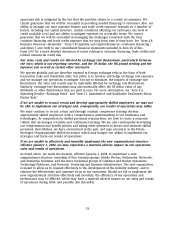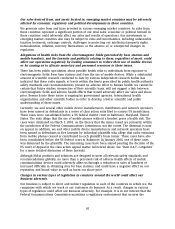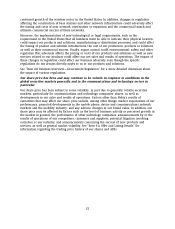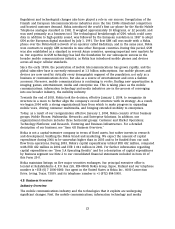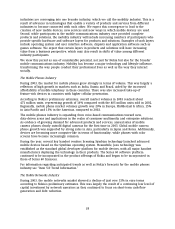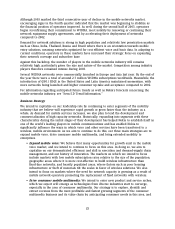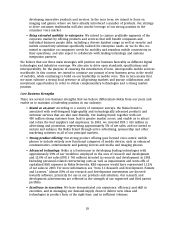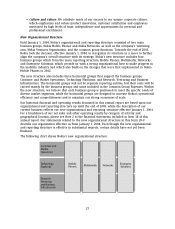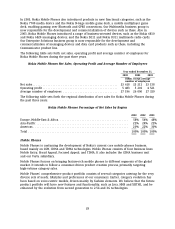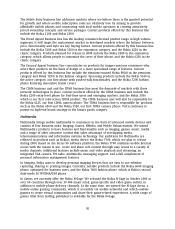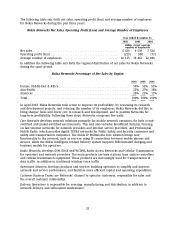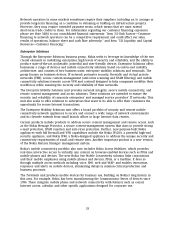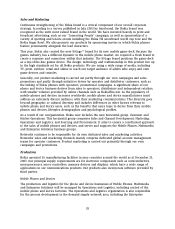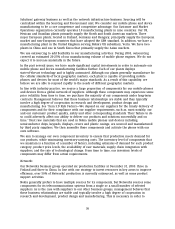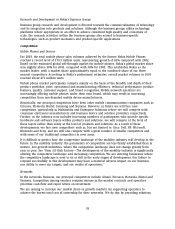Nokia 2003 Annual Report Download - page 30
Download and view the complete annual report
Please find page 30 of the 2003 Nokia annual report below. You can navigate through the pages in the report by either clicking on the pages listed below, or by using the keyword search tool below to find specific information within the annual report.
In 2003, Nokia Mobile Phones also introduced products in new functional categories, such as the
Nokia 7700 media device and the Nokia N-Gage mobile game deck, a mobile multiplayer game
deck, enabling gaming over Bluetooth and GPRS connections. Our Multimedia business group is
now responsible for the development and commercialization of devices such as these. Also in
2003, Nokia Mobile Phones introduced a range of business-oriented devices, such as the Nokia 6810
and Nokia 6820 messaging devices, and the Nokia D211 and Nokia D311 multimode radio cards.
Our Enterprise Solutions business group is now responsible for the development and
commercialization of messaging devices and data card products such as these, including the
Communicator product line.
The following table sets forth net sales, operating profit and average number of employees for
Nokia Mobile Phones during the past three years.
Nokia Mobile Phones Net Sales, Operating Profit and Average Number of Employees
Year ended December 31,
2003 2002 2001
EURm, except average
number of employees
Net sales ................................................... 23 618 23 211 23 158
Operating profit ............................................. 5 483 5 201 4 521
Average number of employees ................................. 27 196 26 090 27 320
The following table sets forth the regional distribution of net sales for Nokia Mobile Phones during
the past three years.
Nokia Mobile Phones Percentage of Net Sales by Region
2003 2002 2001
Europe, Middle-East & Africa ......................................... 58% 54% 48%
Asia-Pacific ....................................................... 22% 24% 22%
Americas ......................................................... 20% 22% 30%
Total ............................................................ 100% 100% 100%
Mobile Phones
Mobile Phones is continuing the development of Nokia’s current core mobile phones business,
based mainly on GSM, CDMA and TDMA technologies. Mobile Phones consists of four business lines:
Mobile Entry, Broad Appeal, Focused Appeal, and TDMA. It also includes the CDMA business unit
and our Vertu subsidiary.
Mobile Phones focuses on bringing feature-rich mobile phones to different segments of the global
market. It intends to follow a consumer-driven product creation process, primarily targeting
high-volume category sales.
Mobile Phones’ comprehensive product portfolio consists of several categories catering for the very
diverse sets of needs, lifestyles and preferences of our consumers. Earlier, category evolution has
been based on voice-centric models, driven mainly by fashion elements. We believe that the future
product portfolio will have new features and functionality, such as Java, MMS and XHTML, and be
enhanced by the evolution from second generation to 2.5G and 3G technologies.
29


